14.11.2005
K.SAKAEV. SAN LUIS OPENING LABYRINTHS: PART 3
The second half of the championship turned out to be less rich both in creativeness and opening ideas. The majority of players lost the motivation that resulted into bloodless draws in some games. Nevertheless there is still enough interesting material. As in the first half, the Sicilian Defense prevailed. The contribution to the theory of this opening was the weightiest, so I suggest beginning the review with it. B90 Morozevich-Polgar 1.¤c3. Despite the original first move, the game proceeded to the popular branch of the Najdorf System. 1...c5 2.¤f3 ¤f6 3.e4 d6 4.d4 cxd4 5.¤xd4 a6 6.Ґe3 ¤g4 7.Ґg5 h6 8.Ґh4 g5 9.Ґg3 Ґg7 10.Ґe2. A semi-forgotten continuation. Normally everybody automatically plays 10.h3, and sometimes 10.Јd2 ¤c6 11.¤b3. 10...h5 11.h4?! And this is a very "ancient" move, from which the 6...¤g4 variation theory has began. Common 11.Ґg4 is stronger, but Morozevich is faithful to his style and so he wants to avoid topical positions. His idea turned out to be more or less successful – Polgar really knew old and forgotten continuations badly, or maybe just could not remember the theory. 11...gxh4 12.¦xh4 ¤c6 13.¤b3 Ґe6 14.Јd2 ¦c8?! This is an inaccuracy that allows White to castle. 14...Јb6! is stronger, and White is bound by the defense of the f2-pawn. Subsequently 15.¤d5 Ґxd5 16.exd5 ¤ce5! is possible with perfect play on dark squares (Topalov-Kasparov, Geneva 1996). 15.0–0–0. The most natural choice, but possibly it is better to secure oneself against tactical tricks: 15.f3 ¤ge5 16.Ґf2 Tiviakov-Rashkovsky, Elista 1996. 15...Јb6N. Previously this position occurred in just one game, in which after 15...Ґf6 16.¦hh1 h4 17.¤d5 Ґxd5 18.exd5 ¤ce5 19.Ґxe5 ¤xe5 White's chances turned out to be slightly better (Movsesian-Kalod, Olomouc 1997). 16.f3. It is interesting to try the pawn sacrifice: 16.ўb1!? ¤xf2 17.¦f1 ¤g4 18.¤d5 with White's initiative position. 16...Јe3. Black had an interesting resource at her disposal 16...Ґxc3!? 17.bxc3!? (17.Јxc3 Јe3+ (on 17...¤ge5 the strong answer is 18.Ґe1!, repelling the threat 18...¤b4) 18.Јd2 ¤b4 (18...Ґxb3 19.axb3 ¤d4 20.Ґc4 ¤xb3+ 21.Ґxb3 Јxb3 22.c3 ¤f6 23.e5±) 19.¤d4 Ґxa2 20.c3 ¤c6 21.fxg4 Јxg3 22.¤f5 Јe5 with very complex play) 17...¤f6 (17...¤ge5 18.¦dh1 with White's slight advantage) 18.Ґf4 ¤e5, and now 19.Ґe3 Јc7 20.Ґd4 or 19.Ґg5 is possible, in both cases with mutual chances. 17.Ґf4 Јxd2+ 18.¦xd2 ¤ge5. One could spoil White's "hair dress" – 18...Ґxc3!? Subsequently 19.bxc3 ¤ge5 20.Ґe3 ¤g6 21.¦h2 ¤ce5 22.f4 ¤c4 23.Ґxc4 Ґxc4 24.ўb2 is possible. Endgame still resembles a middlegame, and it is hard to assess the position. I think it is better to give vague assessment: it is dynamically balanced. 19.Ґe3 Ґf6 20.¦h1 ¤c4 21.Ґxc4 Ґxc4 22.¤a4 b5 23.¤b6 ¦b8= And the arisen ending can also be assessed as more or less equal. 1.e4 c5 2.¤f3 d6 3.d4 cxd4 4.¤xd4 ¤f6 5.¤c3 a6 6.f3 e5 7.¤b3 Ґe6 8.Ґe3 ¤bd7 9.Јd2 b5 10.0–0–0 ¤b6 11.Јf2 ¤c4 12.Ґxc4 bxc4 13.¤a5!? Not long ago 13.¤c5 was considered to lead to White's advantage, with the subsequent knight's maneuver c5-a4-b6-d5. But this transfer takes too much time, and the possession of the d5-square does not guarantee advantage to White, as recent games showed, for example: 13...Ґe7 14.¤5a4 ¦b8 15.¤b6 0–0 a) an interesting choice is 16.g4!? Ґxg4!? (simple 16...¦b7 is also possible) 17.¤xc4 Ґe6!? (17...Јc7 18.¤b6 Ґe6 19.¦hg1 is also not that clear) 18.¤xe5 ¦c8 19.¤d3 ¦xc3 20.bxc3 Јa5 21.¤b4 with unclear play. However, this variation is not obligatory, but it illustrates the richness of position; b) or 16.h4 ¦b7; с) 16.¤cd5 ¤xd5 17.¤xd5 ¦b5 18.¤xe7+ Јxe7 19.Ґd2 c3 20.Ґxc3 Ґxa2, and Black is no worse (Almasi-Gelfand, Göteborg 2005). 13...¦c8? Kasimdzhanov wants to lock the knight on a5, not allowing it to move to the d5 through с6-b4. As the game showed, it was a mistake. 13...¤d7 14.¤c6 Јc7 15.¤b4 Јb7 16.¤bd5 ¦b8 17.b3 cxb3 18.cxb3 Ґe7 19.ўb2 (one should have tried 19.¤xe7 ўxe7 20.¤d5+ Ґxd5 21.¦xd5 ¦hc8+ 22.ўb2 with minimal advantage) 19...Ґd8 20.¦d3 0–0 21.g4 ўh8 22.¦c1 Ґa5 – Black has a good play (Bologan-Gelfand, Merida 2005). 14.Ґb6 Јd7 15.g3ќ Nothing can prevent White from playing f3-f4, the queen stands extremely inappropriately on d7, there is nowhere to put it, and Black suffers. 1.e4 c5 2.¤f3 d6 3.d4 cxd4 4.¤xd4 ¤f6 5.¤c3 a6 6.f3 e5 7.¤b3 Ґe6 8.Ґe3 Ґe7 9.Јd2 0–0 10.0–0–0 ¤bd7 11.g4 b5 12.g5 b4 13.¤e2 ¤e8 14.¤g3 a5 15.ўb1 a4 16.¤c1 Јb8 17.f4 exf4 18.Ґxf4 b3 19.cxb3 axb3 20.a3 20...Јb7N. It is a novelty, previously White obtained an advantage after 20...Ґd8 21.¤f5 ¤c5 22.Ґg2 ¦a4 23.¤d4 (Dolmatov-Loginov, Moscow 2003). 21.¤ce2. It is interesting that 21.¤f5 is still possible – it seems that the queen sacrifice does not work: 21...Јxe4+ 22.Ґd3 Ґxf5 23.Ґxe4 Ґxe4+ 24.ўa1 d5 25.¦he1, threatening 26.¦e4 (25.¤xb3 is also possible); 21.Ґg2. 21...Ґd8 22.¤d4 Ґa5 23.Јe2 ¤c5 24.Ґg2 Ґc3!? Last Black's move is a marvelous practical resource, but its objective value is small. As Alexander Grischuk correctly pointed out in his annotations to the game, White could have ignored the audacious bishop – 25.¤gf5!!±, strengthening his position in the center, and 25...¤a4 meets a strong but simple answer 26.Ґc1!±. In all the variations the e8-knight passive position tells. 1.e4 c5 2.¤f3 d6 3.d4 cxd4 4.¤xd4 ¤f6 5.¤c3 a6 6.Ґe2 e6 7.0–0 Ґe7 8.a4 ¤c6 9.Ґe3 0–0 10.f4 Јc7 11.ўh1 ¦e8 12.Ґf3 Ґf8 13.¤b3 b6 14.e5 dxe5 15.fxe5 ¤d7 16.Ґxc6 Јxc6 17.¤d4 Јb7 18.Јh5 g6 19.Јh4 ¤xe5 20.¤e4 Ґe7 21.¤g5 Ґxg5 22.Ґxg5 f5 23.¦ae1 Јd5 24.¤e2!N. A novelty with an idea: the knight moves to an ideal attacking position with tempo. Previously only 24.¦d1? Ґb7 25.Јg3 ¤f7 was played, and Black has neither the pawn nor the attack (Zelcic-Vovk, Cappelle la Grande 2005). 24...¤f7. 24...Ґb7 25.¤f4 Јd6 26.¦xe5 Јxe5 27.Ґf6 Ґxg2+ 28.¤xg2 needs to be analyzed. 25.¤f4 Јc6 26.¤h5 ¤xg5. 26...gxh5 27.Ґf6 is dangerous. Sergey Shipov quotes the following main variation: 27...Јc7 28.¦xf5 ¤h8 29.Ґxh8 ўxh8 30.Јxh5 Ґb7 31.¦f7 Ґxg2+ 32.ўg1 Јc5+ 33.Јxc5 bxc5 34.ўxg2. It seems to me that Black has to play 34...¦ab8 35.b3 c4! here, getting rid of pawn weaknesses. But it is not a draw still, as some problems remain. 27.¤f6+ ўf7 28.¤xe8 Ґb7 29.¤d6+ Јxd6 30.Јxg5І The position clarified. The bishop's position on d5 is not very stable (White tries to undertake c2-c4), the dark squares on the kingside are weakened. Black needs utmost accuracy to maintain the balance. 1.e4 c5 2.¤f3 e6 3.d4 cxd4 4.¤xd4 ¤c6 5.¤c3 Јc7 6.Ґe3 a6 7.Јd2 ¤f6 8.0–0–0 Ґb4 9.f3 ¤e7 10.¤de2 b5 11.Ґf4. In the round 1 Leko won against Polgar, having started a pawn attack with 11.g4. As we have already analyzed, Black's play can be improved literally on every move of the game. Anand decides not to wait for Polgar's anticipated novelty, and chooses another way of developing the initiative. 11...e5 12.Ґg5 Ґb7 13.ўb1 13...Ґa5? This move had occurred in practice already, but sometimes it is not good to repeat other's games. One had to complete the queenside development: 13...¦c8 (a novelty!), incidentally repelling both threats: 14.¤b5, and 14.Ґxf6 gxf6 15.Јh6 – 15...Ґxc3 16.Јxf6 ¦g8! (16...¤g6 17.bxc3±) 17.¤xc3 (here 17.bxc3?! is doubtful) 17...¦g6 (or 17...b4 18.Ґb5! ¦g6 19.Јh8+ ¦g8 20.Јf6 ¦g6=) 18.Јh8+ ¦g8 19.Јf6 ¦g6 with a draw by moves repetition. 14.Ґxf6N. Naturally, Anand uses the opponent's delay. Akopian played strangely – 14.Јd6?! ¤fd5 (Black is OK also after 14...Јxd6 15.¦xd6 Ґc7) 15.Јxc7 ¤xc7 16.¤g3 f6 1/2–1/2 Akopian-Nisipeanu, Göteborg 2005. 14...gxf6 15.Јh6 Јb6 16.g3!ќ With the bishop standing on h3, light squares in Black's camp crumble away. 1.e4 c5 2.¤f3 e6 3.d4 cxd4 4.¤xd4 a6 5.Ґd3 Ґc5 6.¤b3 Ґa7 7.Јe2 ¤c6 8.Ґe3 d6 9.f4 Јc7?! An unhappy experiment. Now the rook has to move from a7 to c7 after the b7-b5 advance. 9...¤f6 is a normal move, but more often Black exchanges on e3. 10.0–0 (now it was time to capture – 10.Ґxa7) 10...¤f6. And it still was better to begin with 10...Ґxe3+ 11.Јxe3, and only then 11...¤f6. 11.Ґxa7 ¦xa7 12.¤c3 b5 13.a4! It is useful to fix the structure on the queenside. 13...b4 14.¤d1 a5 15.¤e3 0–0 16.ўh1 Ґb7 17.¤g4! ¤xg4 18.Јxg4 ¦aa8 19.¦ae1± With black king remained without defenders, White has a dangerous initiative. C11 Anand-Morozevich 1.e4 e6 2.d4 d5 3.¤c3 ¤f6 4.e5 ¤fd7 5.f4 c5 6.¤f3 ¤c6 7.Ґe3 cxd4 8.¤xd4 Ґc5 9.Јd2 0–0 10.0–0–0 a6 11.¤b3 Ґb4 12.Ґd3 b5 13.¦hf1 ¤b6 14.a3!N. This move looks sharp and risky at first, but it is also very strong. The source game was played more positionally: 14.Јf2 ¤c4 15.Ґxc4 bxc4 16.¤d4 ¤e7! 17.g4 f6! 18.exf6 ¦xf6 with unclear play (Cabrilo-Bareev, Belgrade 1988). 14...Ґe7 15.¤d4. Occupying the d4-square is surely a part of White's strategy. 15...Јc7 16.¤xc6 Јxc6 17.Ґd4. From my point of view, 17.f5! is more fundamental. Anyhow, it is easier and more comfortable to attack having equal material. 17...¤c4 18.Јe2 ¦b8 And here a typical sacrifice followed, that led to a draw (that was not obligatory at all). 19.Ґxh7+! ўxh7 20.Јh5+ ўg8 21.¦d3 (21.¦f3!?) 21...f5 22.¦h3 Ґc5 (22...b4!?) 23.¦ff3 (23.Јg6!?) 23...Ґxd4 24.¦fg3 ¦b7 25.Јh7+ ўf7 26.Јxg7+ ўe8 27.Јxf8+. C42 Leko-Anand 1.e4 e5 2.¤f3 ¤f6 3.¤xe5 d6 4.¤f3 ¤xe4 5.d4 d5 6.Ґd3 ¤c6 7.0–0 Ґe7 8.c4 ¤b4 9.Ґe2 0–0 10.a3 ¤c6 11.cxd5 Јxd5 12.¤c3 ¤xc3 13.bxc3 Ґf5 14.¦e1 ¦fe8 15.Ґf4 ¦ac8 16.h3 Ґe4 17.¤d2!?N. A breath of fresh air in the Petroff! It is a pity that Leko ruined his own idea in a few moves... 17.Ґe3 ¤a5! 18.c4 ¤xc4 19.Ґxc4 Јxc4 20.¤d2 Јd5 21.¤xe4 Јxe4 22.Ґg5 Јxe1+ 23.Јxe1 Ґxg5 leads to equality (Leko-Kramnik, game 1, Brissago 2004). Black maintain the balance in the endgame as well: 17.Ґd3 Ґxf3 18.Јxf3 Јxf3 19.gxf3 Ґd6 20.¦xe8+ ¦xe8 21.Ґe3 ¤a5 22.¦b1 ¦c8! 23.Ґf5 ¦b8! (23...¦e8 24.a4) 24.Ґd3 (24.a4 ¤c4=) 24...¦c8 25.Ґf5 1/2–1/2 Akopian-Bacrot, Saint Vincent 2005. 17...Ґxg2 18.Ґg4 Ґh1 19.f3 Ґh4 20.¦f1?! Sergey Shipov cites an interesting variation here (I did not manage to find any flaws in it): 20.¦xe8+! ¦xe8 21.Јb3! Ґxf3 22.Ґxf3 Јf5 23.Јxb7 ¤xd4 24.Ґxc7 Јc5 25.ўh1 Јxc3 26.¦d1 Ґe1 27.Ґd5 Јxh3+ 28.Ґh2 Јf5 29.¤f3 ¤xf3 30.Јc6 ¦f8 31.Ґxf3 Ґf2 I think that White has the decisive advantage thanks to his active pieces. It is unclear what Anand's point was, albeit he was surely demonstrating his home analysis. 20...f5 21.Ґh5 g6 22.ўxh1 gxh5 23.¦g1+ ўh8і. Black has an extra though doubled pawn, and White has to think about maintaining the equivalence. 1.e4 e5 2.¤f3 ¤f6 3.¤xe5 d6 4.¤f3 ¤xe4 5.d4 d5 6.Ґd3 Ґd6 7.0–0 0–0 8.c4 c6 9.¦e1 Ґf5 10.Јb3 ¤a6 11.¤c3 dxc4 12.Ґxc4 ¤xc3 13.bxc3 b5 14.Ґf1 ¤c7 15.Ґg5N A logical novelty: the bishop moves to g3 with tempo. 15...Јc8. After 15...Јd7 White may play16.¤e5 Ґxe5 17.dxe5±. 16.Ґh4 a5?! I think that 16...Ґe6! is better. Bishop moves to d5, where it protects the weakness on c6 and prevents the с3-с4 break. In this case White has only a minimal advantage. In reply to 17.Јc2 the repetition 17...Ґf5 is possible. 17.Ґg3 a4 18.Јb2 Ґxg3 19.hxg3 ¤d5?! (and here 19...Ґe6 was better) 20.c4 bxc4 21.Ґxc4 ¦b8 22.Јd2± Black's light-squared is rather useless, and the weakness on c6 is very notable. C42 Svidler-Anand 1.e4 e5 2.¤f3 ¤f6 3.¤xe5 d6 4.¤f3 ¤xe4 5.¤c3 ¤xc3 6.dxc3 Ґe7 7.Ґe3 ¤c6 8.Јd2 0–0 9.0–0–0 ¤e5 10.ўb1 10...¦e8N. A good innovation. Previously the practice saw other moves – 10...Ґe6, 10...a6, 10...Ґf6. Black is close to equality in all the lines, but sometimes he encounters problems. The only thing we know for sure is that natural 10...¤f3 is bad. I like the text move, and the way chosen by Bacrot recently: 10...Ґf6 11.¤d4 ¤c6 12.h3 ¤xd4 13.cxd4 Ґf5 14.Ґd3 Ґxd3 15.Јxd3 ¦e8 16.¦he1 Јd7= Naiditsch-Bacrot, Dortmund 2005. 11.¤d4 a6 (now Black wants to play c7-c5) 12.f4 ¤g4 13.Ґd3 d5 14.¦he1 Ґh4 15.g3 ¤xe3 16.¦xe3 ¦xe3 17.Јxe3 Ґf6=. Black equalized. C65 Anand-Topalov 1.e4 e5 2.¤f3 ¤c6 3.Ґb5 ¤f6 4.d3 Ґc5 5.c3 0–0 6.Ґg5 h6 7.Ґh4 g5N A logical novelty; it is hard to put up with the f6-knight pin. 8.Ґg3 d6 9.¤bd2 a6 10.Ґxc6?! 10.Ґa4 looks more natural, because Black has just weakened kingside light squares. 10...bxc6 11.0–0 Ґa7 12.d4!? g4 13.Ґh4 (13.¤h4 exd4 14.cxd4 Ґxd4 15.Јc1 ¤h5 leads to the Black's advantage) 13...gxf3 14.Јxf3 ўg7 15.Јg3+ ўh7 16.Јf3. 16.Јd3 ¦g8 17.f4 ¦g4 18.fxe5 ¦xh4 19.¦xf6 Ґe6 20.¦af1 is risky – White may have sufficient compensation for the piece at best. 16...ўg7 17.Јg3+ Ѕ–Ѕ 1.e4 e5 2.¤f3 ¤c6 3.Ґb5 a6 4.Ґa4 ¤f6 5.0–0 Ґe7 6.¦e1 b5 7.Ґb3 0–0 8.c3 d5 9.exd5 ¤xd5 10.¤xe5 ¤xe5 11.¦xe5 c6 12.d3 Ґd6 13.¦e1 Ґf5 14.Јf3 Јh4 15.g3 Јh3 16.¤d2 ¦ae8 17.¤e4 Ґg4 18.Јg2 Јxg2+ 19.ўxg2 f5 20.Ґf4N. So far everything is known; 20.Ґf4 is a good novelty, but it provides only with symbolic advantage. 20...Ґxf4 21.gxf4 fxe4 22.dxe4 Ґf3+ 23.ўxf3 ¦xf4+ 24.ўg3 ¦fxe4 25.¦xe4 ¦xe4 26.f3 ¦e5 27.c4 bxc4 28.Ґxc4 a5 29.¦c1 ўf8! Otherwise there could be problems. 30.Ґxd5 ¦g5+ 31.ўf4 ¦xd5 32.¦xc6 ¦d2= The rook ending is not only drawn, but also equal. 1.e4 e5 2.¤f3 ¤c6 3.Ґb5 a6 4.Ґa4 ¤f6 5.0–0 Ґe7 6.¦e1 b5 7.Ґb3 0–0 8.a4 b4 9.d3 d6 10.a5 Ґe6 11.¤bd2 ¦b8. On this very day Peter Svidler misplayed this line by 11...Јc8?! 12.¤c4 h6 13.c3 ¦b8 14.d4, and White has a clear advantage (Leko-Svidler). 12.¤c4 h6 13.h3 Јc8 14.Ґe3 ¦d8 15.Јe2 Ґf8 16.¤fd2N. This novelty does not change the evaluation: Black maintains the equality. 16.¦ed1 ¤e7 17.¤fd2 g6 18.d4 exd4 19.Ґxd4 ¤h5 20.¤f3 d5 21.exd5 ¤xd5= Lutz-Almasi, Germany 2005. 16...¤e7 17.d4 ¤g6 18.d5 Ґd7 19.Ґa4 Ґb5=. Black has a reliable position. In conclusion I would like to congratulate Veselin Topalov with deserved victory. As I have read in his interviews, he is ready to play with Kasparov, Kramnik, and in the FIDE championship regardless of the event format. The willingness to defend the title (and therefore the high probability to lose it) is the position of a real champion. So, we are just waiting for future. I think the Topalov-Kramnik or the Topalov-Kasparov match (or even the match of the three) would evoke enormous interest. The organization of such an event would be fair, if the winner promises to take part in the next official world championship, the qualification of which is about to start in Khanty-Mansijsk. In this case we will get a worldwide recognized champion and stable world championship system.
Round 12
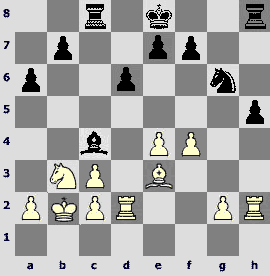
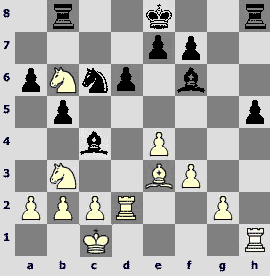
B90 Anand-Kasimdzhanov
Round 11
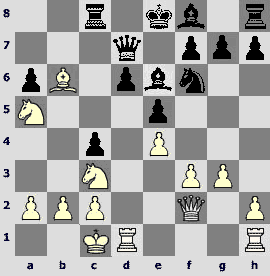
B90 Svidler-Kasimdzhanov
Round 9
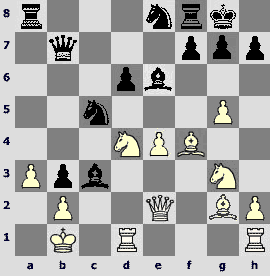
B85 Adams-Topalov
Round 11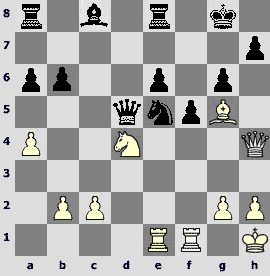
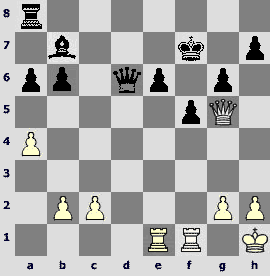
B48 Anand-Polgar
Round 8
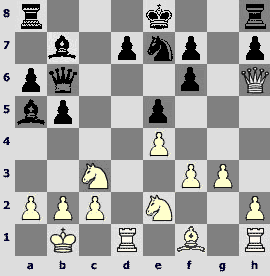
B42 Leko-Kasimdzhanov
Round 14

Only Morozevich was ready to play the French Defense, but his short game with Anand deserves special attention:
Round 13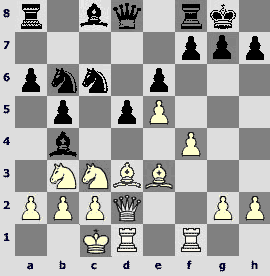
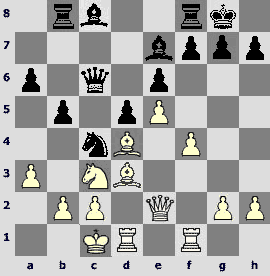
The Petroff was not as popular here as in some elite tournaments, but the participants still managed to breath new life into it, and the Leko-Anand game seems to be especially interesting to analyze.
Round 12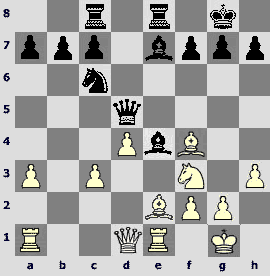
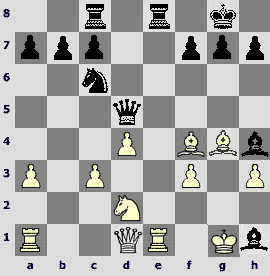
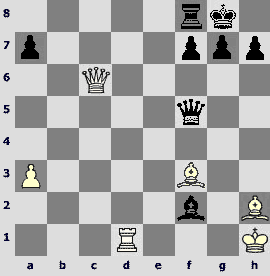
C42 Svidler-Morozevich
Round 11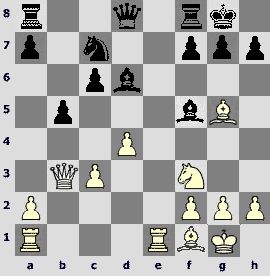

Round 14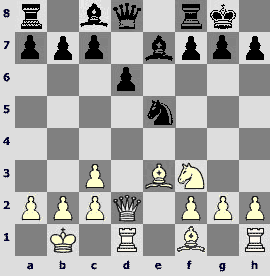
And finally let us proceed to the Ruy Lopez, the most curious example of which is a short but hot encounter of Anand and Topalov.
Round 9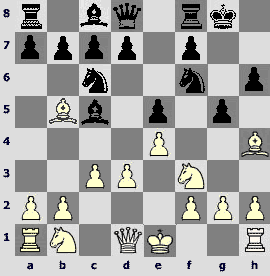
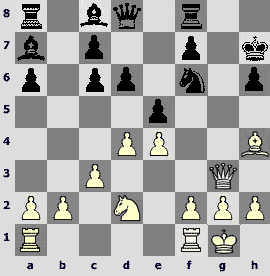
C89 Polgar-Svidler
Round 13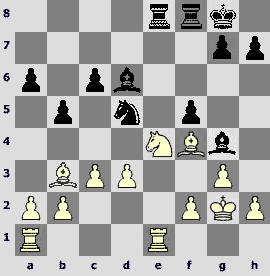
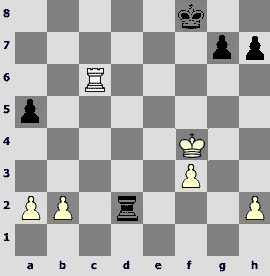
C88 Adams-Anand
Round 10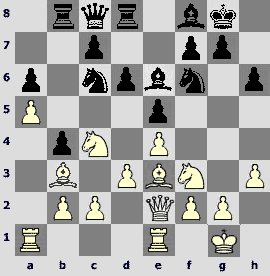
It is curious, but as in the first half, nothing interesting was played in closed games, and only Topalov, having the two-point reserve, played 1.d4 and made quick draws...
ALL ARTICLES BY AUTHOR
